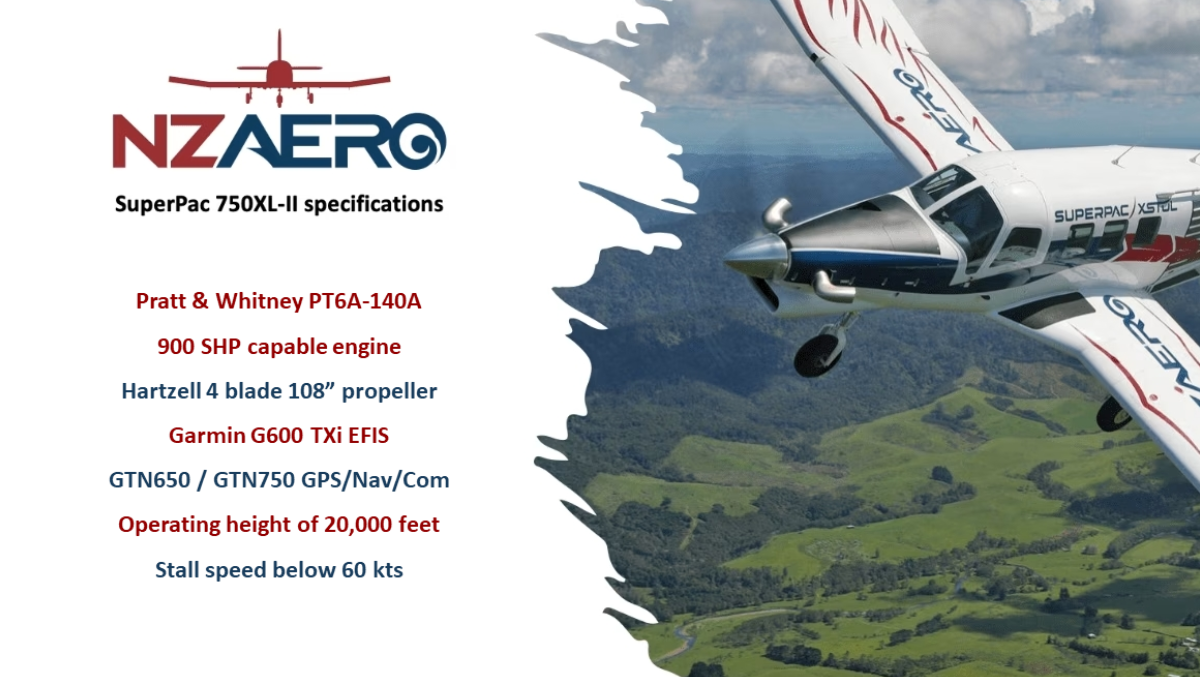
A factory near Hamilton Airport in New Zealand has been lovingly manufacturing aircraft for more than 70 years. But after a brutal COVID shutdown, NZAero has revived the project to return with a next-generation utility aircraft, the SuperPac 750XL-II.
Walk 300 metres from the end of Hamilton Airport’s runway, across a dusty track, and you’ll reach the home of New Zealand’s only aircraft manufacturer, NZAero. The tiny 4 km2 base – set against the backdrop of the North Island’s mountains – is a collection of unassuming hangars and buildings that have been at work for more than 70 years. What makes it truly unique, CEO Stephen Burrows explains on a tour, is that it’s one of only a handful of businesses globally to make virtually every part of each aircraft on one single site.
“Pressing, forming, folding, cutting, machining and milling is all done here,” he enthuses. “Alongside paint, windscreens and component assembly.” There’s a bit of specialist composite work subcontracted out, but everything that can possibly be done in-house, is. If a customer needs a part urgently, the firm can post it out within days to get them back in the skies. “We work hard on aftermarket support to keep their downtime as low as we can.”
Today, NZAero employs a close-knit team of just 60 people, but its history stretches back to the late 1940s when the US military established a facility to support the war effort. In the years since, generations of workers have built more than 700 aircraft, with around 400, unbelievably, still active. The place means a lot to Burrows, too. He caught the aviation bug from his father, an aircraft engineer, and took up his first role here three decades ago, working in a variety of positions, including aircraft manufacture, maintenance and quality assurance. “I’m passionate about the product. I’ve been involved most of my life.”
It hasn’t all been easy, though. In early 2021, the site’s then-owner, Pacific Aerospace, collapsed into liquidation as COVID shut down borders and sent nations into lockdown. Things looked bleak before a local couple, Neil Young and Dee Bond, stepped in to revive the project. The pair – unashamed aviation enthusiasts – undertook the arduous task of reacquiring certificates, hiring back staff and mucking in on jobs big and small. He doesn’t tell me himself, but Bond reveals later Burrows was one of only two staff rehired initially to rebuild the company from scratch.
The struggle was worth it because today, the reborn company is unveiling its first all-new model, the Superpac 750XL-II. The next generation utility plane is the Swiss Army Knife of aircraft, predominantly designed for skydiving companies but also as at home undertaking aerial photography, search and rescue, or simply hauling boxes from A to B. Its secret sauce is its ability to take off in under nine seconds and operate in the harshest conditions. “Each 750XL-II takes 12,000 man hours to build,” says Burrows. “There’s about 6,000 pieces in the aircraft and 8,000 piece parts to make the various configurations.”
The new aircraft can trace its DNA back to the company’s Cresco, which first took flight in 1979. Initially designed for aerial agriculture, the business found it was increasingly being used for skydiving because of its ability to get into the air quickly. The problem is it didn’t have a lot of space in the cabin. “It sparked the thought that if we stretch it and make it bigger and fatter, you could make a really good utility aircraft.” The original 750 XL, certified in 2003, became a New Zealand success story, operating in 28 countries.
Its sequel has upgraded everything. New Pratt & Whitney PT6A-140A engines deliver up to 900 horsepower, the propellor is quieter, it uses less fuel, there are advanced avionics in the cockpit, and it can manoeuvre at low speeds with stable handling. “It’s designed to land on unprepared, one-way strips with gradients of up to 30 degrees,” says Burrows. “Steep enough that you would struggle to walk up them.” The SuperPac has Oleo suspension, which goes up and down, unlike competitor aircraft with sprung steel undercarriages that swing sideways as they bounce down to land, ripping up the ground.
In Burrows’s office, photos on the wall show the original 750 XL in Africa and Papua New Guinea. Operators there, he points out, require an aircraft versatile enough to deliver essential goods to areas prone to slips and earthquakes, which can leave locals without water. “We get stories back every day saying it’s saved lives. It means a lot to us that we’re producing something that brings some good to the world.”
With the new aircraft now finished, the company is set to expand again in early 2024. The site is set for another upgrade, and new staff, including apprentices, are being hired. “I’m eager to see us succeed for another 70 years. We’re just custodians of this factory, and we need to pass on the knowledge and skills to the next generation so it can continue.”
To find out more, visit NZAero’s website here














